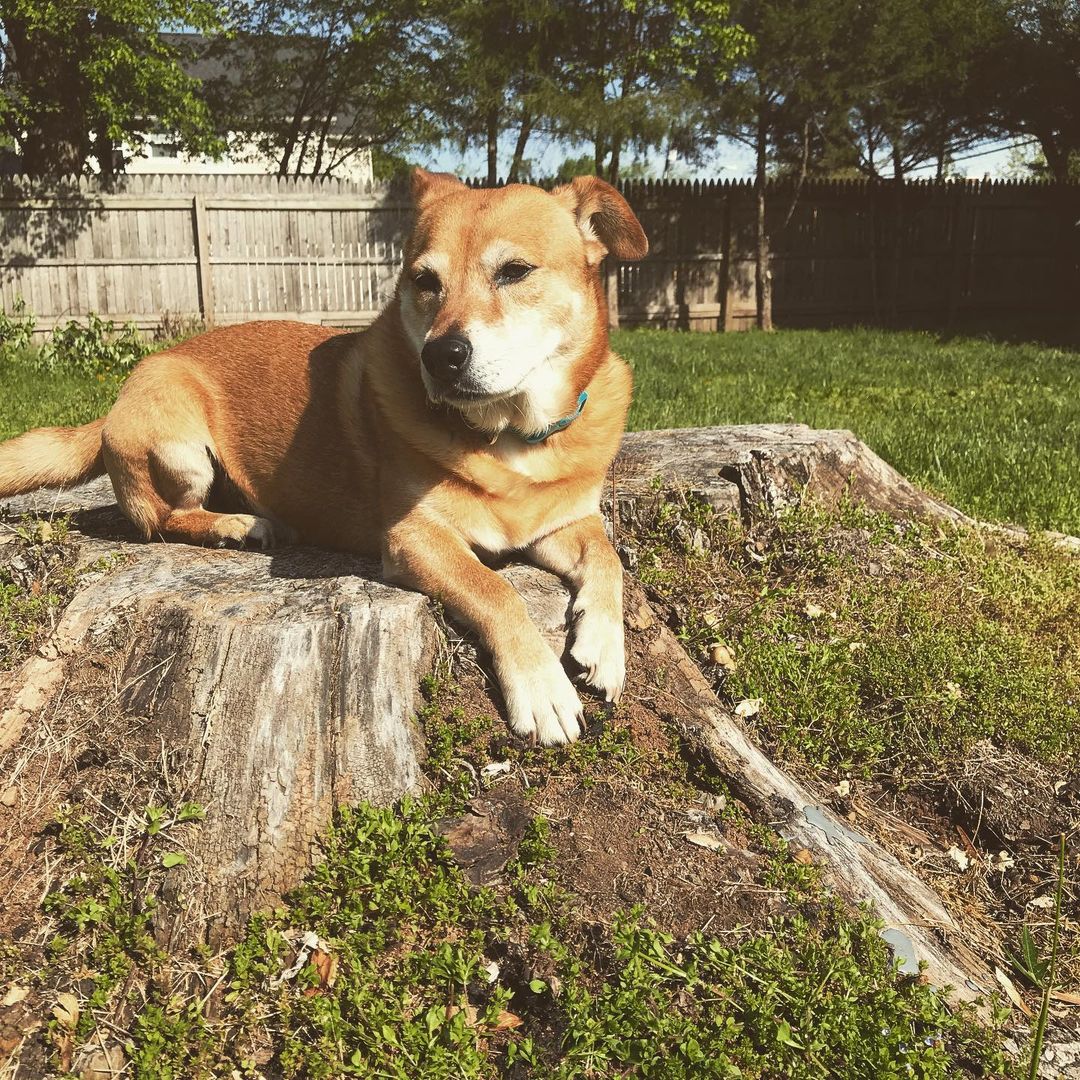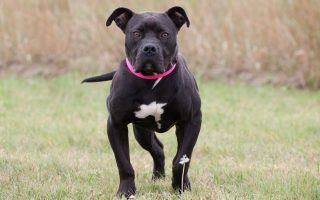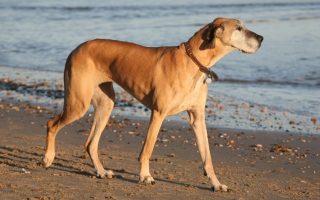Blue and Red Heelers are often at the top of the list for people looking to get themselves a loyal, intelligent, and hard-working dog.
However, choosing between the two and deciding on Blue Heeler vs Red Heeler is actually nothing more than the aesthetic dilemma.
Each of these dogs belongs to the same breed with their color being the only difference.
They’re both Australian Cattle Dogs.
To make things even more confusing, this breed also has a couple of other names.
You may know them as Queensland Heelers or Halls Heelers. So, no matter if you go blue or red, you’ll be getting a dog with similar personality traits.
[wpsm_toplist]
Blue Heeler vs Red Heeler – What Are The Differences?
| Blue Heeler | Red Heeler |
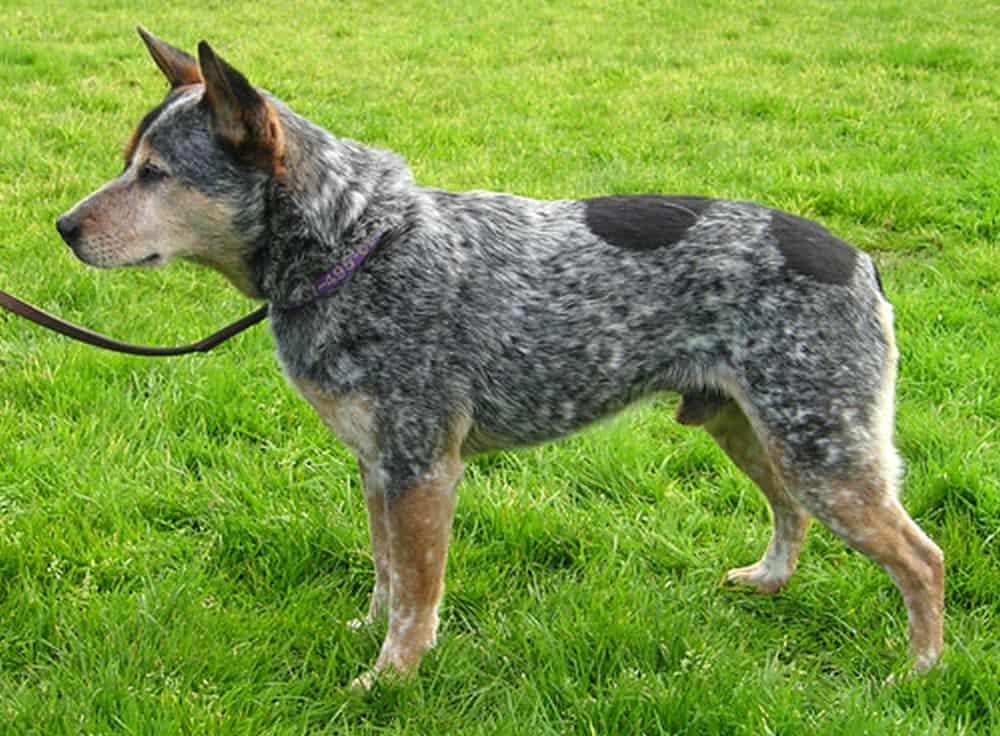 | 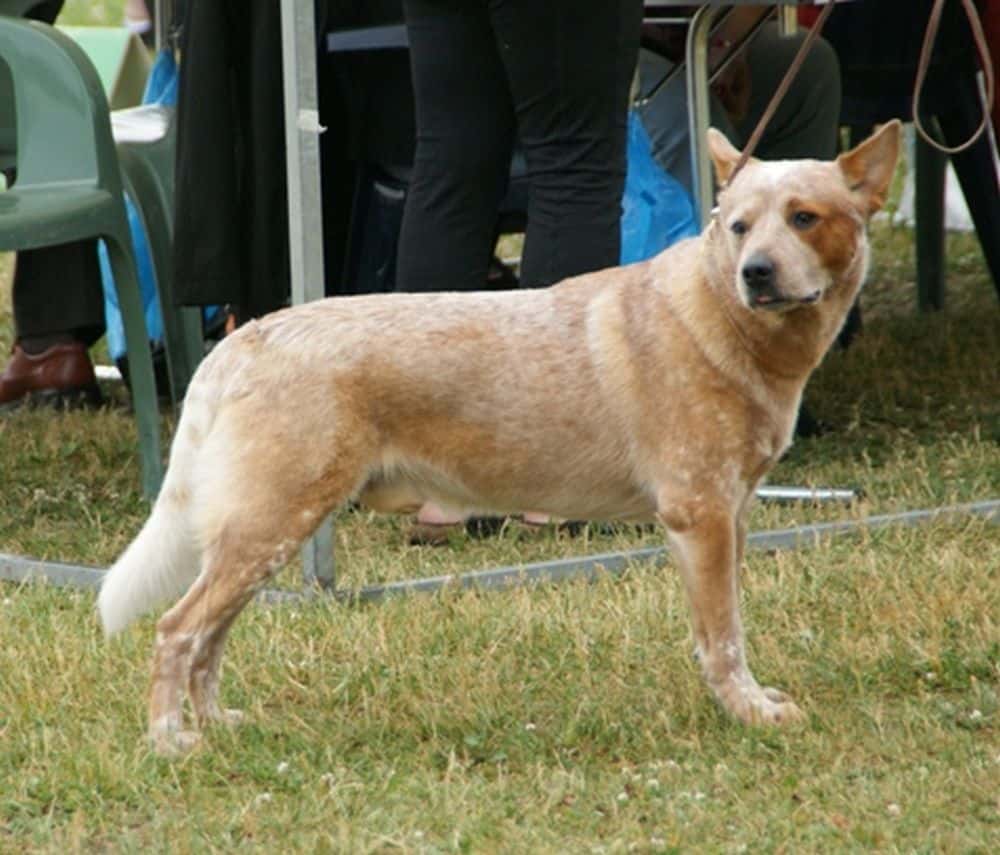 |
| Blue Heeler by Ellen Levy Finch (CC BY-SA 3.0) | Red Heeler by Canarian (CC BY-SA 3.0) |
Even the simple eye test of Blue Heeler vs Red Heeler reveals that there isn’t much differentiating the two apart from their color.
They’re both medium-sized dogs with an athletic and muscular build, broad heads, and distinctive powerful jaws.
Blue Heeler Coat Colors
The base color of Blue Heeler’s coat is black. The white hairs are mingled throughout, creating a bluish appearance.
The dogs with more white hair will feature a lighter shade of blue and vice-versa. Those with less white hair will give out the impression of a darker blue color.
Their blue coat can be speckled or mottled. The speckled coat is characterized by irregular stripes of white hair bursting through the black background of the coat.
The mottled blue coat features small darker spots, the size of a fingertip, against a lighter base color.
Blue Heelers can also have evenly distributed black, blue, or tan markings. Some specimens have a black patch over one or both eyes.
The forelegs and chest area can have rich tan markings.The Blue Heeler coloring also has a practical purpose.
It makes them almost invisible at night, so they don’t frighten the livestock and have less of a chance of getting kicked by a spooked cow or some other cattle.
At the same time, lighter color on the tail gives the owners an indication of their whereabouts.
Red Heeler Coat Colors
The Red Heeler’s coat features a reddish or ginger base, with white hairs distributed throughout the outer coat.
Just like with Blue Heelers, their base coat can be speckled or mottled with white hair.
Depending on the distribution and frequency of lighter patches, Red Heelers’ color varies from deeper to lighter red.
Sometimes, they can have a patch of white hair on their forehead, commonly known as a “Bentley Star”.
Some dogs will have a stronger red mask over one or both eyes.
Red Heelers’ coloring was useful to this breed as it prevented confusing these dogs to wild dingo’s who have similar stature and getting mistakenly shot at.
What Color are Australian Cattle Dogs Born?
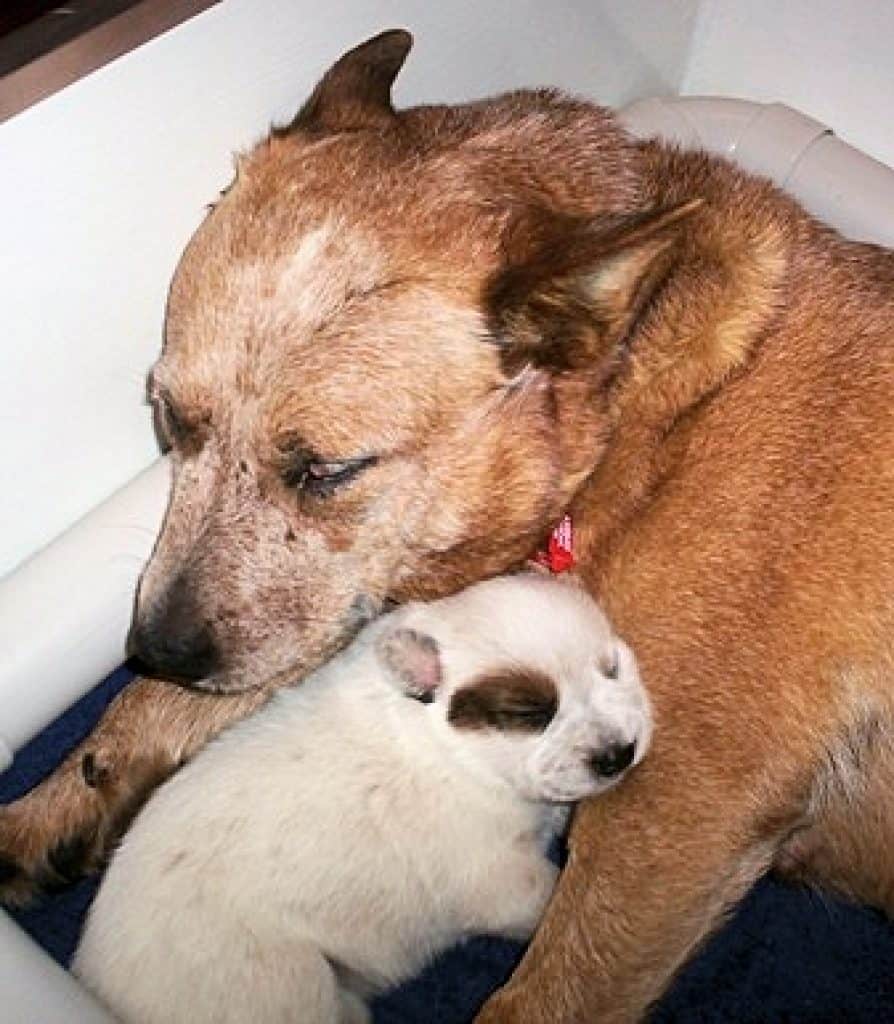
If you compare Blue Heeler vs Red Heeler at birth, you won’t see much difference.
All Australian Cattle Dogs are born covered in solid white fur with occasional dark patches on the back or around eyes and ears.
These spots will usually be black with Blue Heelers and brown with their red cousins.
It’s not until they reach around 4 weeks of age that they start to grow red or blue hairs.
And, only after 8-12 weeks, these colors become predominant and you can get an idea of what will the grown dog look like.
What Determines the Color of Blue and Red Heelers?
The color of grown Heelers depends on the genes they inherit from their parents.
Three types of genes are significant for future coloring: ticking, agouti, and spotting.
Ticking
Ticking genes determine whether the puppies will grow to be red or blue.
Agouti
The agouti gene is responsible for the red and blue patches that usually appear on the face.
Spotting
And, finally, the spotting gene influences the distribution of the white spots on the body.
Mating two Blue Heelers will usually produce blue offspring.
However, there are plenty of cases of two blue parents bringing a red puppy to the world due to the recessive genes hiding in the background.
Red Heelers can produce red offspring with a mate of any color. In some rare cases, mating a Blue and a Red Heeler will deliver a blue/red mix.
Still, these are extremely infrequent, as are the Heelers with chocolate or fawn coat.
These colors can only appear if both parents have that recessive gene in the background.
It can remain hidden and carried for generations before showing up and resulting in these unusual color variants.
What Breeds are Ancestors of Blue and Red Heelers?
The development of Australian Cattle Dogs was a result of an effort to create a breed that would be capable of herding livestock over the long distances on the rough terrain of the Australian Outback.
Original breeders mixed British herding breeds with Dingo’s to get all the traits crucial for a hardy herding dog.
There’s a lot of speculation on what exact breeds played part in the development of the modern Australian Cattle Dog.
According to most sources, the original mix was between Dingo’s and Blue Merle Highland Collie.
That’s likely where Blue Heelers got their color from.
Later on, they were further mixed with the Australian Kelpie which brought endurance and herding ability, Bull Terriers which made them more tenacious and aggressive, and Dalmatians whose genes are likely responsible for Heelers being born white.
Conclusion
As you can see, Blue and Red Heelers are more or less the same dogs and share all of the key traits.
With the coat color being the only meaningful difference between the two, the choice mainly comes to a personal aesthetic preference.
Both variants are sure to make a great addition to your home.
No matter if you’re looking for a hard worker or a loving family friend, you can’t go wrong with either Blue or Red Heeler.
They are great playmates for kids and are also more than up for any task you put in front of them.
For ages, they served as irreplaceable help on farms and ranches and were faithful and devoted companions to their owners.

